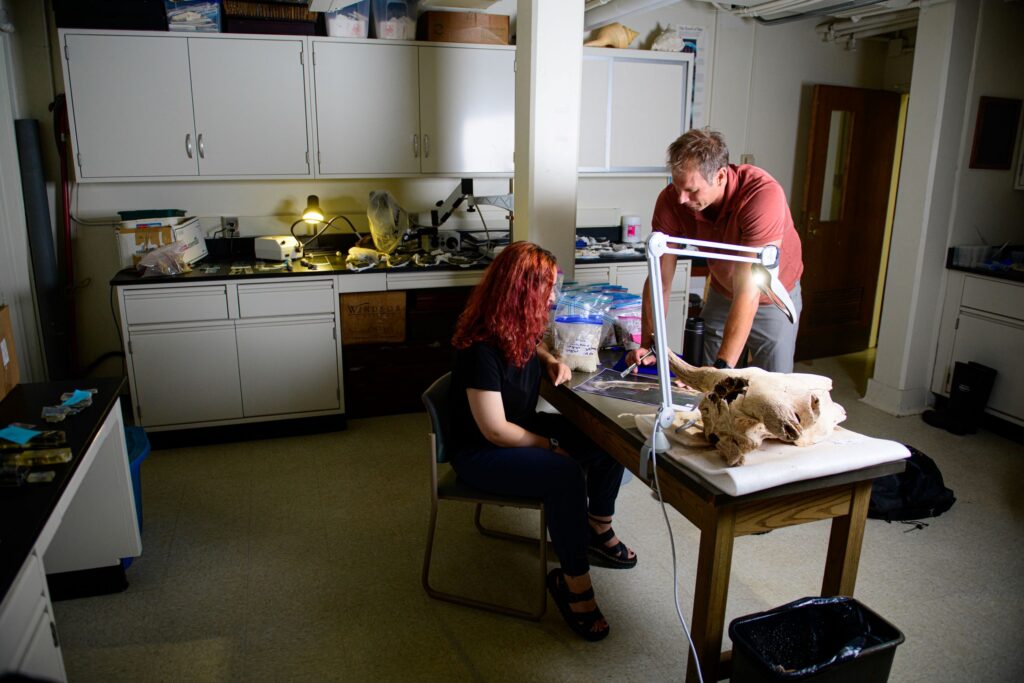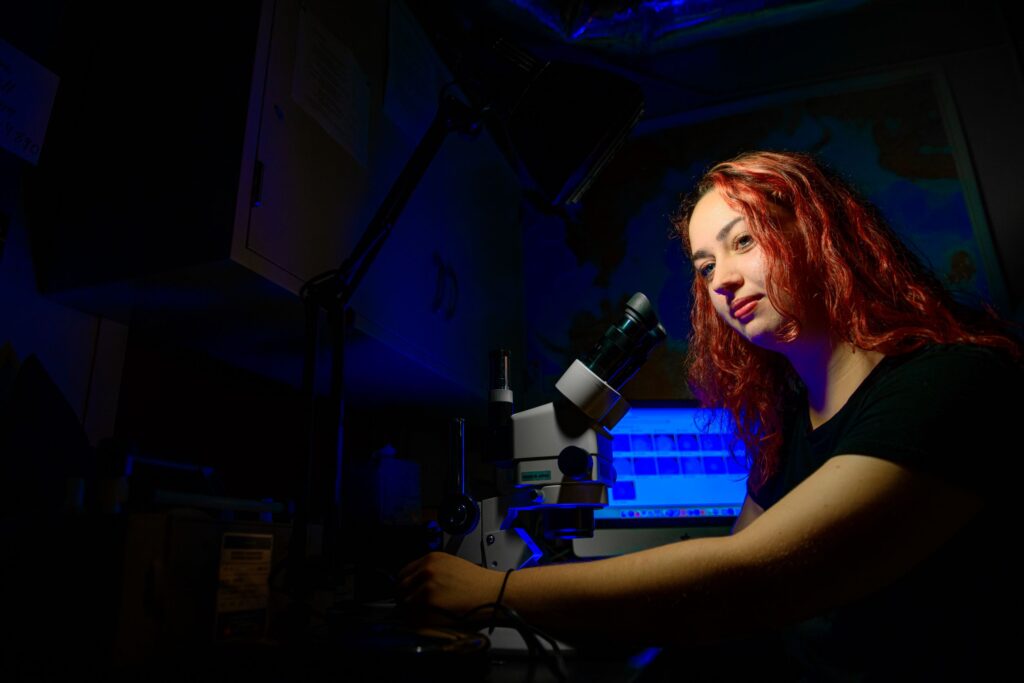Measuring and mapping microplastics
Each summer, Lafayette College students have the opportunity to participate in academically meaningful experiences outside the classroom. Students selected as EXCEL Scholars engage in collaborative research projects with Lafayette faculty, enhancing their academic skills as well as developing other skills that will be useful in post-graduate education and careers. This summer, we are highlighting several scholars who are working on hands-on, collaborative research projects with faculty and other students.

Olivia Najjar ’23 and Prof. David Sunderlin
STUDENT RESEARCHER: OLIVIA NAJJAR ’23, ENVIRONMENTAL STUDIES, MINOR IN GEOLOGY
ADVISER: DAVID SUNDERLIN, ASSOCIATE PROFESSOR OF GEOLOGY AND DEPARTMENT HEAD
WHAT IS YOUR RESEARCH ALL ABOUT?
My research, performed under the guidance of Prof. Sunderlin of the Geology Department, focuses on measuring and mapping microplastics within beach sands across the North American continent. For each sand sample that we collect, we run it through multiple filtrations in order to extract any present microplastics.
This filtration process involves submerging the sand sample in salt water for six hours at a time to allow the existing microplastics to separate and float to the surface. Once these microplastics float to the surface and the mud and fine-grained sediments in the sand have settled, the microplastics can be filtered out, counted, and recorded.
In order to calculate the total number of microplastics within a given sand sample, a known value of 10 distinct plastic pieces is added to the sample prior to filtration. If, at the end of the filtration process, all distinct plastic pieces are accounted for, we can infer that all other pre-existing microplastics within the sample have also been collected. Otherwise, we can use the retrieval rate of the distinct microplastics to generate a percentage of how many microplastics we filtered out of the sample compared to an inferred total amount.
Additionally, the characteristics of these distinct microplastics, such as size, shape, and density, are varied so as to better understand any potential patterns within the data. If we were to only filter out microplastics of a certain density, for example, we can infer that there may be more microplastics of different densities within our sample that are unaccounted for.
WHY IS YOUR WORK IMPORTANT TO THE ENVIRONMENT?
As global plastic production, distribution, and disposal continue to increase annually, microplastics (plastic particles less than 5 mm in diameter) are becoming more widespread and concentrated in Earth’s living and non-living systems. Though much attention regarding plastic pollution has been centered on the world’s oceans, more recent studies have recognized the potential for microplastics to be transported across landscapes, even in places previously untouched by humans.
These findings are growing increasingly relevant as policy actions are beginning to reflect the issue of environmental plastic pollution, and it is important to understand the full scope of the matter as we start to take steps in the right direction toward a cleaner planet.
HOW DID YOU GET INVOLVED IN THIS PROJECT?
My interest in studying microplastics was introduced to me by Prof. Kira Lawrence, John H. Markle Professor of Geology, who knew of my desire to find a project combining my environmental studies and geology backgrounds. I had spoken with her previously about pursuing a career in oceanographic studies, so this project seemed like the perfect fit for me. I contacted Prof. Sunderlin about it, who has been working with former EXCEL Scholars on developing and progressing with the early stages of this project, and from then on I was hooked. Since then, Prof. Sunderlin and I have been working hard to further develop this microplastics project and contribute some really interesting findings to the larger scientific community.

EXCEL Scholar Olivia Najjar ’23
WHAT DO YOU HOPE TO ACHIEVE?
My hope in completing this research is to effectively demonstrate the pervasiveness of plastics and to draw attention to just how much plastic surrounds us daily, even in the most natural of settings. Additionally, I hope that my work will generate eye-opening data regarding microplastic distribution globally and whether ocean currents, wind patterns, or human land use play a significant role in the number of microplastics found on a given beach. My findings will be presented at the 2022 national conference of the American Geophysical Union in Chicago, and I am working with Prof. Sunderlin to create a database in which outside studies contribute their findings and keep this project going outside of Lafayette College.
hands-on research

Lafayette's EXCEL Scholar Program
Lafayette's EXCEL Scholars program allows students to work closely and collaboratively with faculty on significant research projects that hone critical-thinking and communication skills

